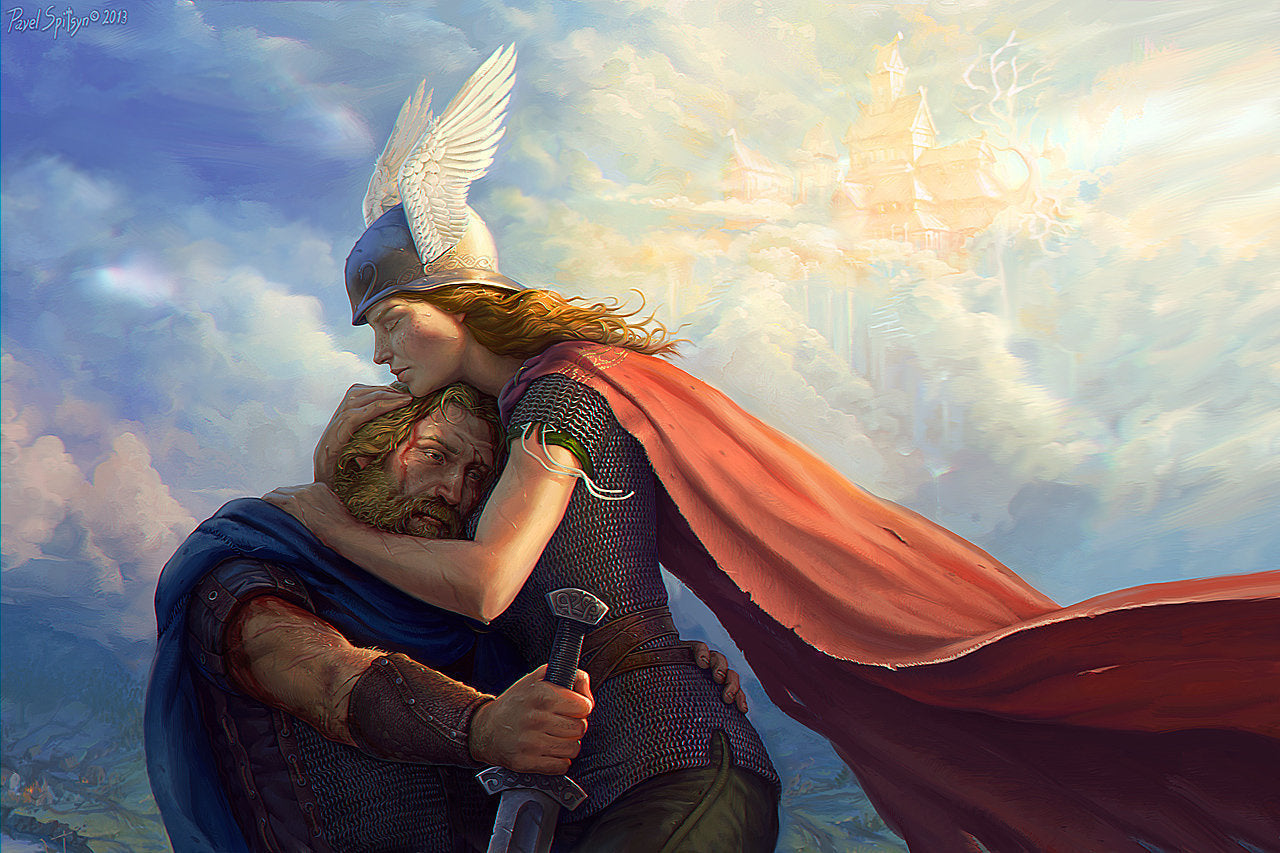Valhalla, Odin’s Hall. The heavenly dwelling where the worthy warriors who fell in battle come to spend their afterlives with the Allfather himself. Much more than simply a warrior's paradise, Valhalla is the training grounds for Ragnarok itself.
The name Valhalla, or Valhǫll in Old Norse, is a compound name made of two words: Valr meaning “dead body on a battlefield”, and hǫll meaning hall.

Valhalla, by Max Brückner, 1896.
The honored dead who reside in Valhalla form the Einherjar, meaning “army of one” or “those who fight alone”. According to Rudolf Simek, the name Einherjar may be derived from an older root that meant “those who belong to an army,” which actually makes a lot more sense.
Valhalla is not a place for idleness, it is an afterlife for warriors. During the day, the Einherjar battle one another, doing countless valorous deeds along the way and enhancing their already significant military prowess. In the evening, all their wounds are healed and a divine banquet awaits them, with plenty of mead and boar meat.
The meat comes from the boar Saehrimnir (Sæhrímnir), who comes back to life every time he is slaughtered and butchered, while the mead that comes from the udder of the goat Heidrun (Heiðrun). Every warrior feasts to his or her heart content, except for the divine host. Odin himself does not eat, only drinking wine. Odin feeds his two wolves Geri and Freki from the meat on his plate, while enjoying the company of the gathered warriors.
Andhrímnir has
Sæhrímnir boiled
in Eldhrímnir,
the best of meat.
But few know
on what the Einherjar feed.
– Grímnismál 18
Geri and Freki
are fed by the battle-skilled
father of armies;
But on wine alone,
weapon glorious
Odin ever lives.
– Grímnismál 19
All the training has a very specific objective: the preparation for Ragnarok, when the Einherjar will fight side by side with the Gods, and the Allfather will personally lead his chosen warriors in battle against Fenrir, who is destined to slay him, possibly in vengeance for being tied in a boulder (read more about Fenrir here).

Odin versus Fenrir by Leo D'Amico
The Grímnismál states that the gates of Valhalla are so wide that 800 warriors can walk through it next to each other. The roof is decorated by shields, and it is held up by spear shafts, on the benches lay chain mails. On the western door seats a wolf, and above him an eagle. Valhalla is enormous, it has 540 rooms, and many of them are most likely dedicated to housing the large army of Einherjar:
Five hundred doors | and forty there are,
I ween, in Valhall's walls;
Eight hundred fighters | through one door fare
When to war with the wolf they go.
– Grímnismál 23
Not all worthy warriors end up in Valhalla however. According to the Prose Edda, only half of the worthy end up being chosen by the Valkyries to join Odin’s Hall (read more about the Valkyries here).

The Ride of the Valkyries is a painting by Johan Gustaf Sandberg
The other half is destined to the field of Fólkvangr, the Goddess Freyja domain, who has the right to pick the first half of the warriors (read more about Freyja here).
The ones who did not die in battle are destined to Helheim, which contrary to what may be commonly believed, is not a place of punishment in the Norse Religion, but simply a continuation of life somewhere else. The dead in the realm of the Goddess Hel spend their time doing the same things that they did in life: eating, drinking, fighting, sleeping, and so forth. In some sagas, it’s even portrayed as a land of startlingly abundant life on the other side of death (read more about Helheim here).
Wherever one is destined to Valhalla, Fólkvangr or Helheim, as long as someone lives his or her life with honor, an honored afterlife awaits.
Sources:
Lee M. Hollander (1962) The Poetic Edda. 15th. edition. Texas, USA: University Research Institute of the University of Texas. ISBN 978-0-292-76499-6
Simek, Rudolf. 1993. Dictionary of Northern Mythology. Translated by Angela Hall. ISBN-10: 0859915131
Jesse Byock (2005) Snorri Sturluson, The Prose Edda. 1st. edition. London, England: Penguin Books Ltd. ISBN-13 978-0-140-44755-2
Anthony Faulkes (1995) Snorri Sturluson, Edda. 3rd. edition. London, England: Everyman J. M. Dent. ISBN-13 978-0-4608-7616-2














Comment (1)
Thank you for the information! Have read some
But not this in particular!